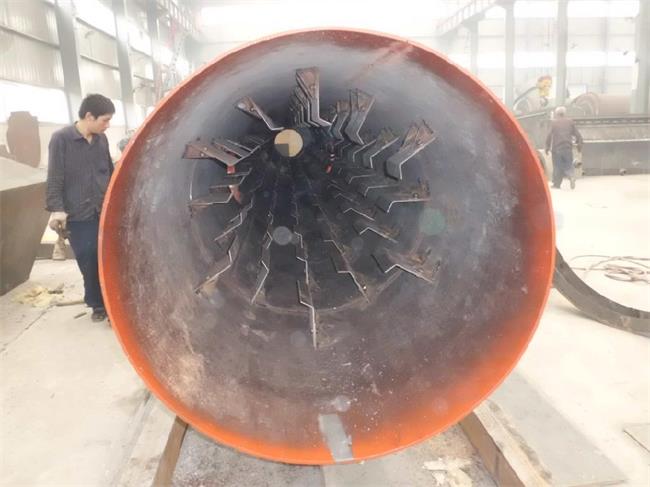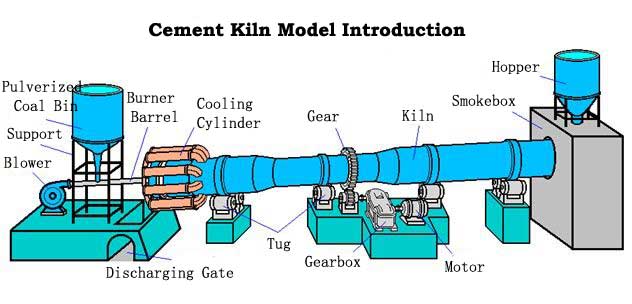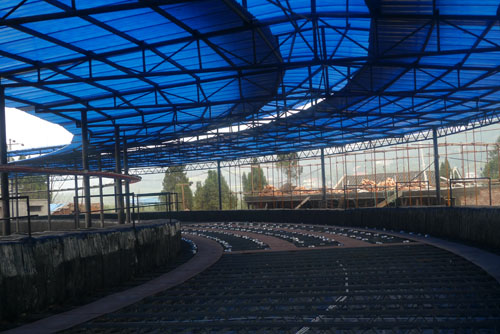Rotary Kiln Parts Description Rotary Kiln Component Design
There are many parts of rotary kiln of shell, tire, roller, refractories, and kiln. While various kiln parts will have unique design and application. The detailed introduction about the rotary kiln is in the following.
Tires and Rollers

The purpose of tires (often called riding rings) and rollers is to support the kiln and allow it to rotate with minimal friction. Rotary kilns are among the largest items of permanently moving industrial machinery, the largest examples weighing in their fully-loaded form several thousand tons. Despite the challenges of their size and their high temperature, the best examples of rotary kiln rotate on their rollers almost frictionlessly, the power supplied by the drive being almost entirely in order to oppose the eccentric load of the contents of the kiln. On cutting the power to a kiln, the kiln will “roll back” and unless a brake is applied, will continue to swing like a pendulum for ten or fifteen minutes before coming to a standstill. This finely-tuned mechanical condition requires sophisticated design of the kiln’s supports.

Kiln Seals
The seals connect the ends of the kiln to the kiln hood and the kiln exhaust duct. They prevent leakage of cold air into the system at these points. Gases are moved through the kiln by the suction provided by a fan in the exhaust or in the preheater, so the efficiency of the fan relies upon minimal inleak at the back end seal. Furthermore, the front-end seal ensures that there is sufficient suction to draw the secondary air from the cooler into the kiln. Both these seals have to deal with high temperatures, and so must be either of a simple heat-proof design, or must be kept cool by means of external fans. Both must also be capable of remaining air-tight as the kiln expands and contracts, and must cope with rotation of a kiln that may be slightly distorted.
The Kiln Drive

The early kilns turned very slowly, the girth gear meshing with a worm gear. Subsequently full-speed rotation of kilns in the range 0.5-1.5 rpm became standard, and the gear meshed with a pinion running at 10-20 rpm. The pinion shaft was driven by a gearbox. Some kiln gearboxes derived their power from layshafts driven by a common electric motor or a steam engine, but this was comparatively uncommon in Britain, and most kilns had their own dedicated electric motor. In many older plants, rotary kiln drives represented the first use of electricity for anything other than lighting.
For more information on custom rotary kilns, or rotary kiln design, contact us with www.dinglicrusher.com/contact/, dingli@dinglicrusher.com, or 0086-0373-400-700-2111.
NextContent:none











